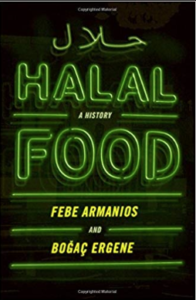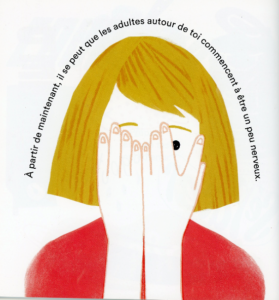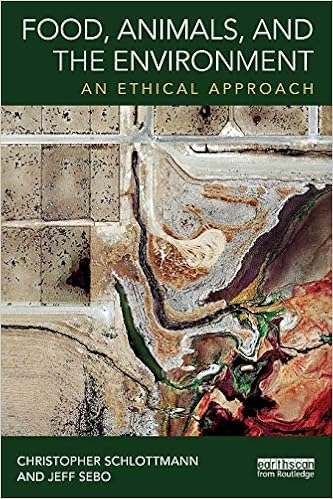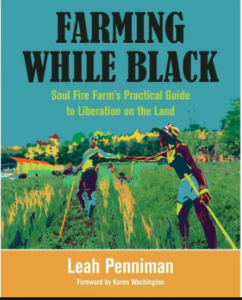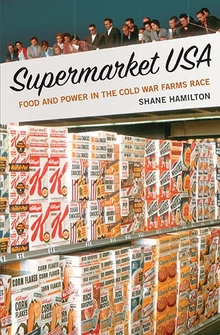Weekend reading: The Farm Bill
Daniel Imhoff with Christina Badaracco. The Farm Bill: A Citizen’s Guide. Island Press, 2019.

I wrote the Foreword for this book, a revised, updated, and even more fabulously illustrated version of the previous editions. Here’s what I said:
In 2011, I had the bright idea of teaching a graduate course on the farm bill to food studies students at New York University. As happens every four years or so, the bill was coming up for renewal and I thought it would be useful for the students–and me–to take a deep dive into what it was about. I knew help was available. Dan Imhoff had laid out the issues with great clarity in his first book about this bill in 2007. I used it as a text.
I wrote about this experience in “The farm bill drove me insane” (Politico, March 17, 2016), which it most definitely did. The farm bill is huge, encompassing more than a hundred programs, each with its own acronym and set of interested lobbyists. The bill is unreadable, consisting mainly of amendments to previous bills; it is comprehensible only to lobbyists, a precious few congressional staffers, and occasional brave souls like Imhoff willing to take it on. It costs taxpayers close to $100 billion a year; most weirdly, 80 percent of this money covers the costs of the Supplemental Nutrition Assistance Program (SNAP, formerly food stamps) which is stuck in the farm bill for reasons of politics. The farm bill represents pork-barrel, log-rolling politics at its worst.
Imhoff explains the bill as a fully rigged system gamed by Big Agriculture in collusion with government. The public pays for this system thrice over: at the checkout counter, in subsidized insurance premiums, and for cleaning up the damage it causes to health and the environment. Despite these scandalous costs, the mere mention of the words “farm bill” makes eyes glaze over. Why? This is a forest-versus-trees problem. The bill—the forest–is far too big and complicated to grasp. We try to understand it by looking at the programs–the trees–one by one. Hence: insanity.
Imhoff’s approach to the forest is to focus on the overriding issues that farm bills ought to address. A rational agricultural policy should promote an adequate food supply while protecting farmers against uncertain climate and price fluctuations. It should promote the health of people and the environment and do so sustainably. And it should provide incentives for people to farm and ensure a decent living for everyone involved. But instead the farm bills encourage an industrial agricultural system incentivized to overproduce corn and soybeans to feed animals and to make ethanol for automobiles, to the great detriment of public health and environmental protection.
Nowhere are these problems more obvious than in the debates about the 2018 farm bill. As I write this, the House is working on a bill that seems less protective of health and the environment than any previous version. To cut costs while maintaining support of Big Agriculture, the House aims to reduce SNAP enrollments, eliminate conservation requirements, and cut out even small programs that support small farmers or promote production of fruits and vegetables—“specialty crops” in USDA parlance.
At this moment, the outcome of the 2018 bill is uncertain, but The Farm Bill: A Citizen’s Guide has a more generic purpose—to introduce readers to the big-picture issues. Imhoff relates the history of farm bills, their origins and subsequent growth. Imhoff describes the system: how Big Agriculture works, how food stamps ended up in the bill, what all of this means for farming and food assistance, and what kind of legislation is needed to promote a healthier food system.
We should, Imhoff insists, rework the farm bill to promote public health by supporting an agricultural system that grows food for people rather than animals and cars. We should legislate that crops be grown sustainably so as to reduce agriculture’s contribution to greenhouse gas emissions, soil losses, and water pollution. Imhoff suggests twenty-five solutions to current agricultural problems. These should be required reading for anyone who cares about what we eat, today and in the future. It is too late to fix the 2018 farm bill, but there is plenty of time and opportunity to make the next one a true citizens’ farm bill. To quote Imhoff: “it’s time to question whether the industrial mega-farm model is the only way to feed a growing global population, or whether it’s even possible for such a system to survive without costly government supports and unsustainable environmental practices.” His book should inspire better, smarter solutions. Get busy.
–New York, May 2018

